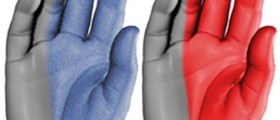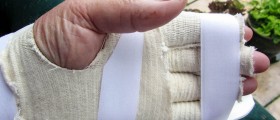
Wrist pain can be caused by injury (sudden trauma or repetitive stress), arthritis and carpal tunnel syndrome.
Wrist injury symptoms
Depending on the cause, intensity and type of injury, wrist pain may vary. Pinpointing the location of your wrist pain can help the doctor in diagnosing the symptoms.
Wrist pain treatments
Based on the location, type and severity of the injury, various treatment methods can be used.Medications can help relieve the pain. Ibuprofen (Advil, Motrin) and acetaminophen (Tylenol) are over the counter painkillers and can ease the wrist pain. Stronger pain medications require a prescription. If the wrist pain is a result of inflammation, the doctor can use cortisone (corticosteroid) injection on the affected area. Corticosteroids are risky especially in long term use and should be avoided unless they are necessary.
Wrist pain prevention Even though it is impossible to predict injuries, the probability can be reduced drastically by following a few simple guidelines. Bone nutrition should include daily intake of calcium (especially for adults) to strengthen the bones. Taking Vitamin D regularly reduces chances of bone fracture. Wearing protective gear in course of athletic or recreational activities decreases a chance of injury considerably. Protective gear should be used by everyone, not just professional athletes.Some daily activity such as using a keyboard and devices that require wrist action may seem harmless, but can cause serious wrist damage and chronic wrist pain. The devices should be chosen carefully and should include proper ergonomics. Regular breaks and correct posture will bring more comfort to the wrists and will make them last longer.

















Your thoughts on this
Loading...